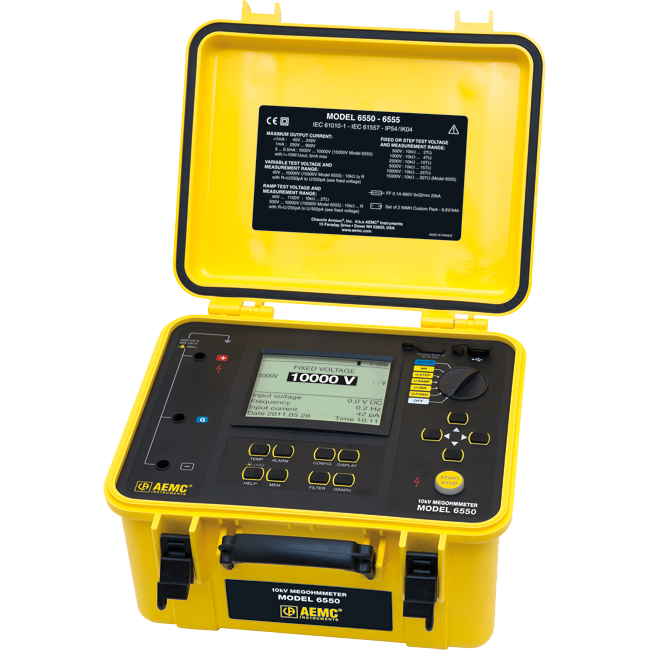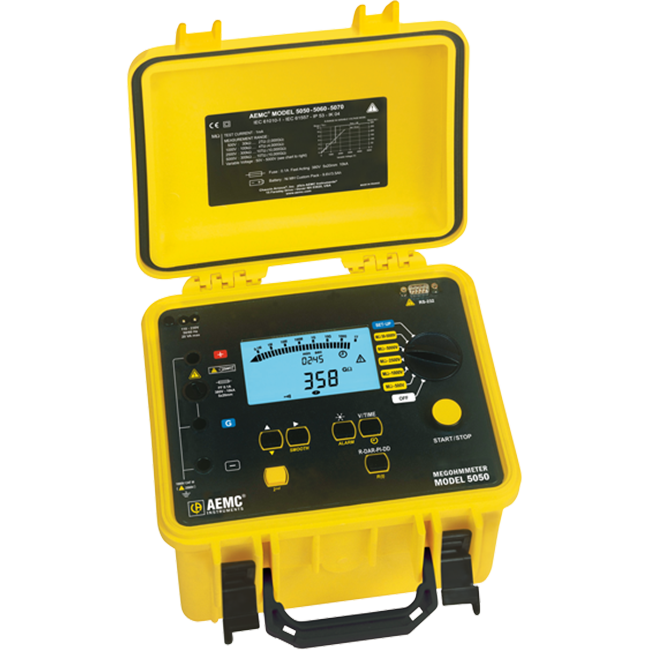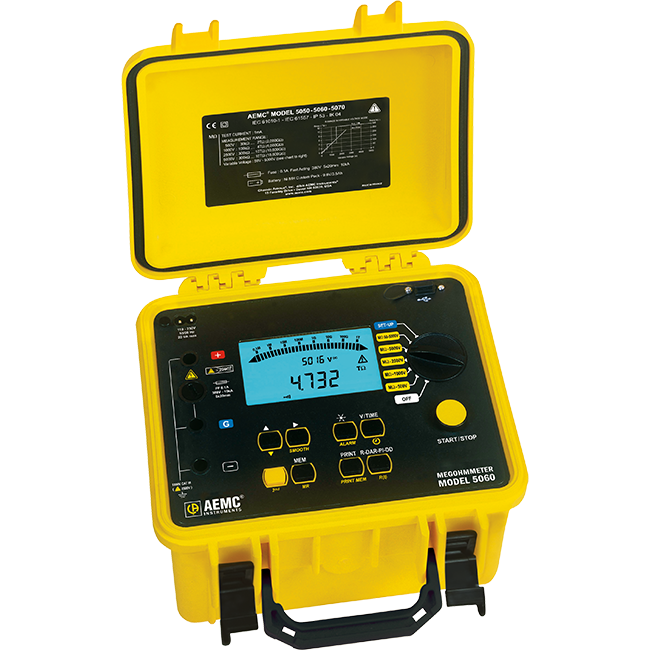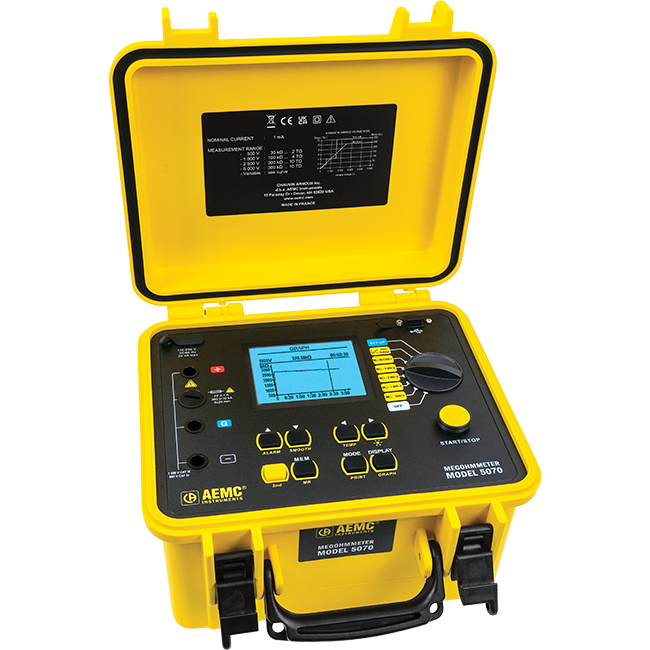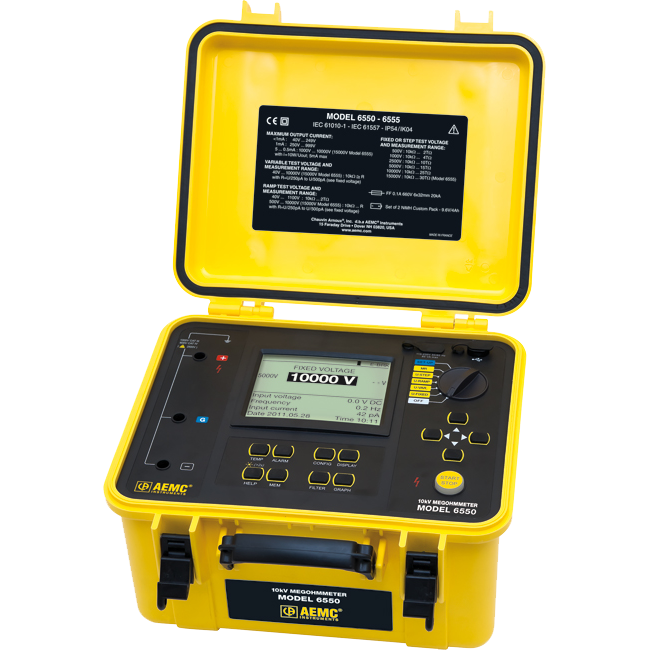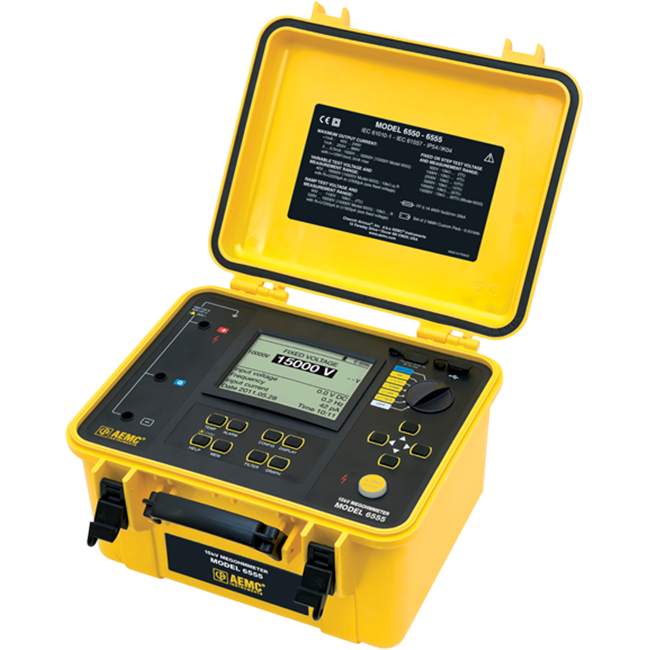(800) 343-1391 • (603) 749-6434
www.aemc.com
- Mega Menu
- Products
By Industry
Other Product Lines
- Learn
- Resources
- Support
- Customer Service
- Export
- Join our Mailing List
- Legal Notices
- Literature Request
- Policies
- Product End-of-Life Policy
- Private Training
- Repair and Calibration Services
- Returns
- Safety and Recall Notices
- Sales Support
- Software/Firmware
- Technical Support
- Terms and Conditions
- Training Seminars
- Training Webinars
- Warranty Registration
- Where To Buy
- Store
- About Us
- Contact Us
- Products
- Cable Testers
- Clamp-On Meters
- Current Probes
- Data Loggers
- Decade Boxes
- Power Supplies/Generators
- Digital Multimeters
- Electrical Test Tools
- Environmental Testers
- Ground Resistance Testers
- GroundFlex® Field Kit
- Static Ground and Bond Test System Kit
- High Voltage Testers
- Megohmmeters - Insulation Testers
- Micro-Ohmmeters
- Multi-Function Installation Testers
- Oscilloscopes
- Power Analyzers / Energy Loggers
- Tachometers
- Thermal Imaging
- Digital Transformer Turns Ratiometers
- Accessories
- Learn
- Articles
- Resources
- Support
- Where to Buy
- Store
- Company
- Contact Us
ⓘ Due to recent tariff adjustments, product prices may be affected, and some surcharges may not yet be included in the prices shown.
We’re Sharing the Burden — Absorbing 50% of Tariff Costs to Help You Save. Learn More.
ⓘ Debido a los recientes ajustes en aranceles, los precios de los productos pueden verse afectados y algunos recargos podrán no estar incluidos en los precios mostrados en nuestro sitio web.
Para ayudarle a ahorrar, estamos asumiendo el 50% del costo de los aranceles. Más información en este enlace.
- Applications
- Megohmmeters
- Dielectric Discharge (DD) Testing
Dielectric Discharge (DD) Testing
The Dielectric Discharge (DD) test, sometimes called re-absorption current test, is performed during the discharge cycle after the test. There are three components of current (charging, polarization and leakage currents) present during a standard insulation test, which make it difficult to determine the dielectric discharge. Rather than measuring the polarization current during an insulation test, the DD test looks at the de-polarization and capacitive discharge currents at the conclusion of the insulation test.
The device under test (DUT) must be charged for an adequate amount of time to be stabilized therefore, the only remaining current component is leakage current. The DUT is then discharged at the completion of the insulation test and the current flow is measured during a standardized time of one minute. This current is dependent on the overall capacitance and the ending test voltage.
Dielectric discharge is calculated as: Dielectric Discharge = I (after 60 seconds) / Volts x Capacitance
The DD test can identify excess discharge currents that happen when a layer of multi-layer insulation is damaged or contaminated. This condition will be missed by both the spot test and the Polarization Index test. Discharge current will be higher, for a known voltage and capacitance, if an internal layer is damaged. The time constant of this individual layer will differ from the other layers, causing a higher current than for insulation that is good. Homogenous insulation will have a DD value of 0 while good multi-layer insulation could have a value as high as 2. The table below is a guide for Dielectric Discharge test results:
| Insulation Condition | DD Value |
| Bad if greater than | 7 |
| Poor | 4 to 7 |
| Questionable | 2 to 4 |
| Okay if less than | 2 |
| Homegenous | 0 |
